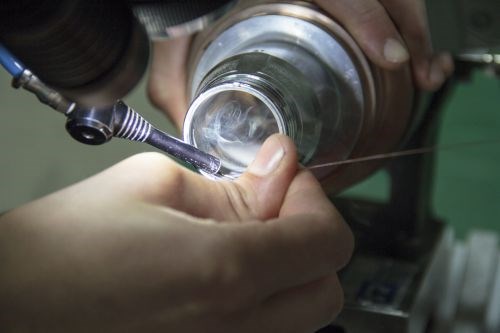Laser Welding Earns its Keep
These three providers of mold maintenance and repair services all recently deemed laser welding as too important to outsource. Based on the resulting savings and the amount of time the equipment is in use, they were right.

All three companies use their welders to lay beads measuring only 0.005 inch, often along sharp edges or intricate features without marring highly finished or textured portions of the surface. In the application shown here, an apprentice at Hoffer Plastics welds the ID of a chrome-plated AMPCO core.
A typical MoldMaking Technology application story details only one manufacturer, but in one recent case, I just had to expand the net. Three different providers of mold repair and maintenance services had essentially the same story to tell—a story that, I thought, would be far more convincing as a single narrative. That story involves the reasons for and benefits of bringing laser welding in-house. Read the article here.
Although I don’t have any hard evidence to suggest a trend beyond the experience of these three manufacturers, I wouldn’t be surprised to find other companies making a similar transition. For one, all three companies covered in the article do enough laser welding to justify handling it themselves rather than relying on outside suppliers. This has much to do with accuracy and the fact that the process generates little heat, an advantage that reduces the risk of deforming the surrounding workpiece material. The three companies' welding systems, all from O.R. Laser, are also easy enough to use that in all three cases, apprentices are among the primary operators. Finally, the shops cite annual savings in excess of $20,000, enough to pay off their units within only a year of use. Read the article to learn more.













